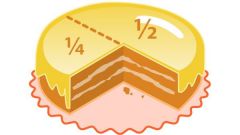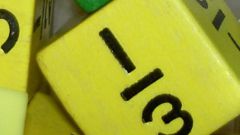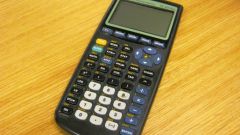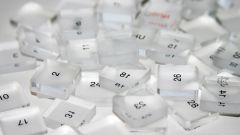The term "multiplicity" refers to the field of mathematics from the point of view of this science, he means the number of times a certain number is part of another number.
Simplifying the definition, we can say that the ratio of one number in relation to another shows how many times the first number is greater than the second. Thus, the fact that one number is a multiple of another actually means that more of them can be divided into less without a trace. For example, a multiple of the number 3 is 6.
This understanding of the term "multiplicity" involves deducing from it several important consequences. The first one is that any number can have unlimited multiples of numbers. This is due to the fact that in order to obtain a multiple of a certain number another number will first be multiplied by any positive integer, which, in turn, there is an infinite set. For example, a multiple of 3 are 6, 9, 12, 15 and others, derived by multiplying the number 3 by any positive integer.
The second important property concerns the definition of the smallest integer that is a multiple of the considered. So, the smallest multiple of any number is the number itself. This is due to the fact that the smallest integer result of dividing one number by another unit, namely, the dividing a number by itself and provides this result. Accordingly, the number of atoms under consideration cannot be less than the number itself. For example, for number 3 the smallest multiple of a number is 3. To determine the largest number that is a multiple of the considered virtually impossible.
Multiples of 10 have all the listed properties along with other multiples. So, from these properties it follows that the smallest number that is a multiple of 10 is the number 10. In this case, since the number 10 is two digit, it can be concluded that a multiple of the number 10 can only be a number consisting of not less than two characters long.
To get other numbers that are multiples of 10, the number 10 must be multiplied by any positive integer. Thus, the list of numbers that are multiples of 10, enter the numbers 20, 30, 40, 50 and so on. You should note that all numbers must be evenly divisible by 10. To determine the largest number that is a multiple of 10, as in the case with other numbers, it is impossible.
In addition, please note that there is a simple practical way to determine whether a particular multiple of the number in question 10. To do this, you should find out what is its last digit. So, if it is equal to 0, the number is a multiple of 10, ie it can be divided without a remainder by 10. Otherwise, the number is not a multiple of 10.
The concept of multiplicity
Simplifying the definition, we can say that the ratio of one number in relation to another shows how many times the first number is greater than the second. Thus, the fact that one number is a multiple of another actually means that more of them can be divided into less without a trace. For example, a multiple of the number 3 is 6.
This understanding of the term "multiplicity" involves deducing from it several important consequences. The first one is that any number can have unlimited multiples of numbers. This is due to the fact that in order to obtain a multiple of a certain number another number will first be multiplied by any positive integer, which, in turn, there is an infinite set. For example, a multiple of 3 are 6, 9, 12, 15 and others, derived by multiplying the number 3 by any positive integer.
The second important property concerns the definition of the smallest integer that is a multiple of the considered. So, the smallest multiple of any number is the number itself. This is due to the fact that the smallest integer result of dividing one number by another unit, namely, the dividing a number by itself and provides this result. Accordingly, the number of atoms under consideration cannot be less than the number itself. For example, for number 3 the smallest multiple of a number is 3. To determine the largest number that is a multiple of the considered virtually impossible.
Multiples of 10
Multiples of 10 have all the listed properties along with other multiples. So, from these properties it follows that the smallest number that is a multiple of 10 is the number 10. In this case, since the number 10 is two digit, it can be concluded that a multiple of the number 10 can only be a number consisting of not less than two characters long.
To get other numbers that are multiples of 10, the number 10 must be multiplied by any positive integer. Thus, the list of numbers that are multiples of 10, enter the numbers 20, 30, 40, 50 and so on. You should note that all numbers must be evenly divisible by 10. To determine the largest number that is a multiple of 10, as in the case with other numbers, it is impossible.
In addition, please note that there is a simple practical way to determine whether a particular multiple of the number in question 10. To do this, you should find out what is its last digit. So, if it is equal to 0, the number is a multiple of 10, ie it can be divided without a remainder by 10. Otherwise, the number is not a multiple of 10.







